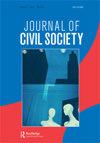Community co-production engaging youth with mental health problems. Is equal participation possible?
IF 0.9
Q3 POLITICAL SCIENCE
引用次数: 0
Abstract
ABSTRACTCommunity co-production is intended to improve public democracy as well as welfare economy. This single case study is a ‘most likely’ case for success and explores how experiences of equal participation among youth with mental health problems take place in a partnership between a social enterprise and a Danish municipality. I explore how the democratic dimension is configured in relation to a focus on service production and efficiency. Applying the multidimensional model of ‘the collaborative turn’ I find that equal participation of vulnerable citizens can be enhanced through co-production when youth with mental health problems equally partake in activities including supervisors from the municipality and a blended group of local participants. This, however, provide a dilemma. As part of their thriving, young people need to take an independent stand on things and interact in different transforming roles. But for the municipality, participation is a means to achieve municipal goals and supervisors can set standards for the participation of young people that contribute to stigma and inhibits the equal participation.KEYWORDS: Community co-productionyouth with mental health problemscritical single case studyequal participation AcknowledgementsThe author expresses her appreciation to Professor Linda Lundgaard Andersen Roskilde University Denmark for her valuable comments and the evaluation partnership for contribution to the data-collection.Disclosure StatementNo potential conflict of interest was reported by the author(s).Additional informationFundingThis data collection was funded by the Danish National Board of Social Services.社区合作制作吸引有精神健康问题的青少年。平等参与是可能的吗?
【摘要】社区合作生产的目的在于提高公共民主和福利经济。这一单一案例研究是一个“最有可能”成功的案例,探讨了社会企业和丹麦市政当局之间的伙伴关系如何使有精神健康问题的青年平等参与。我探讨了民主维度是如何与服务生产和效率的重点相关联的。运用“合作转向”的多维模型,我发现,当有精神健康问题的青年平等地参与活动,包括来自市政当局的主管和当地参与者的混合群体时,弱势公民的平等参与可以通过共同生产得到加强。然而,这带来了一个困境。作为他们蓬勃发展的一部分,年轻人需要对事物采取独立的立场,并在不同的转型角色中进行互动。但对于市政当局来说,参与是实现市政目标的一种手段,管理者可以为年轻人的参与设定标准,这助长了耻辱,阻碍了平等参与。关键词:社区合作生产;青少年心理健康问题;关键个案研究;平等参与致谢作者对丹麦罗斯基勒大学Linda Lundgaard教授的宝贵意见和对数据收集的评价合作表示感谢。披露声明作者未报告潜在的利益冲突。该数据收集由丹麦国家社会服务委员会资助。
本文章由计算机程序翻译,如有差异,请以英文原文为准。
求助全文
约1分钟内获得全文
求助全文

 求助内容:
求助内容: 应助结果提醒方式:
应助结果提醒方式:


